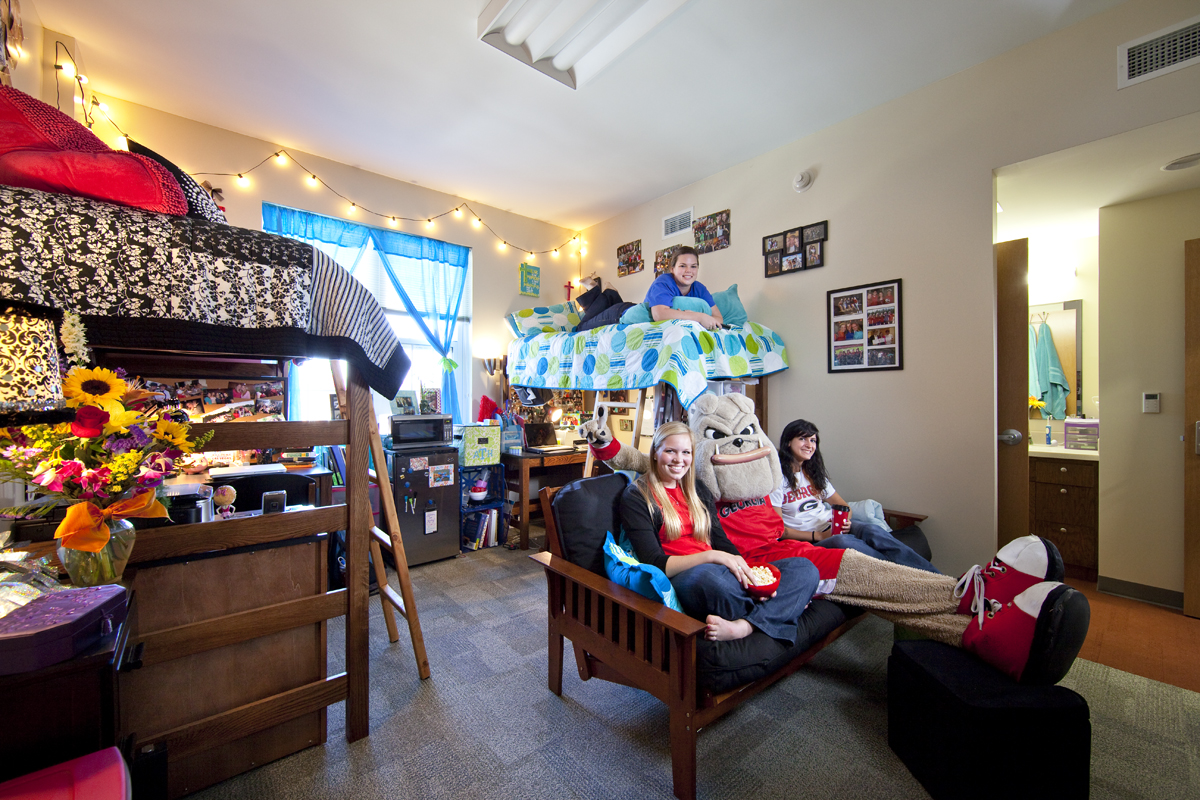Athens, Ga. – Building 1516, the newest residence hall at the University of Georgia and the first to be LEED certified, received two honors recently: the on campus award by Student Housing Business for best use of green and sustainable construction and a gold LEED certification.
Building 1516 was the seventh building on a university campus in the state of Georgia to be certified at the gold level and the third to be so designated in Athens, including the Tate Student Center expansion, which received LEED gold certification in 2010.
The Georgia Museum of Art addition, which received its gold certification in late 2011, was the fourth building in Athens to be certified.
The Leadership in Energy and Environmental Design green building rating system attests that a building was designed and built using strategies aimed at improving performance across multiple areas: energy savings, water efficiency, carbon dioxide emissions reduction, indoor environmental quality and stewardship of resources with sensitivity to their impacts. LEED-certified residence halls have healthier environments, which in turn can contribute to higher productivity and improved health and comfort to residents and staff.
Built by Juneau Construction, Collins Cooper Carusi Architects and HADP Architecture, the new residence hall opened in fall 2010. Judges for the industry publication Student Housing Business stated, “Outstanding job of supporting the campus’s commitment to sustainability utilizing both typical and innovative techniques. From design through construction it is clear that sustainability was ‘top of mind’ throughout the process as proven by the measurable energy savings in an inviting living environment.”
Energy saving features in the new residence hall include in-room temperature controls; high efficiency sinks, showers and toilets that allow significant water savings per year; and double-paned, low-energy windows that help rooms maintain constant temperatures and have switches that turn off the heating and cooling system when windows are left open. Additionally, low-emitting volatile organic compounds in paint, carpet, coatings, sealants and adhesives reduce the contaminants that effect indoor air quality.
Additionally, energy recovery units in the building’s attic temper fresh air coming in so that the temperature difference between the inside and outside air is more consistent. These measures, along with a “cool” roof and reflective concrete sidewalks, reduce overall energy costs.
Building materials were chosen by their extended life expectancy. For example, Building 1516’s copper roof has a 75-year life expectancy, and the exteriors were installed specifically to improve service life and ease of maintenance. All these features collectively have accounted for as much as a 33 percent reduction in utility costs per square foot compared with residence halls of the same square footage.
Ten percent of the materials used to construct the residence hall were made from recycled content, and another 10 percent originated from within 500 miles of the construction site, reducing air pollutants involved in material transportation. Also, approximately 90 percent of the companies contracted to construct the building were local businesses.
Two other projects that are LEED-registered and tracking certification at the silver or gold level are the College of Pharmacy addition and the Richard B. Russell Building Special Collections Libraries. Once certified, these buildings will establish a half-million square feet of documented LEED space in the university’s facilities inventory.
For more information about University Housing’s Building 1516, see http://housing.uga.edu/residence/tour/reed/building-1516.


